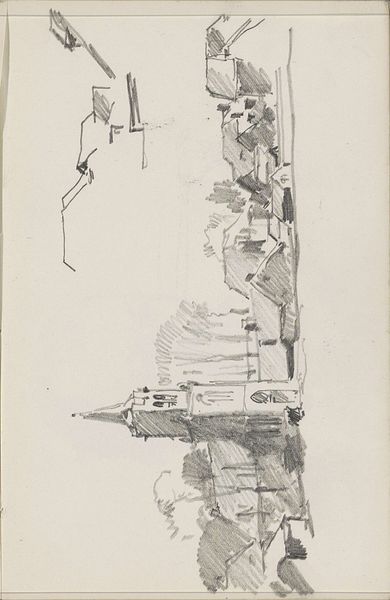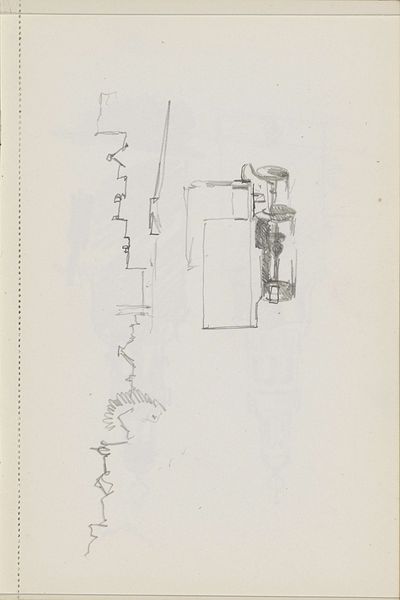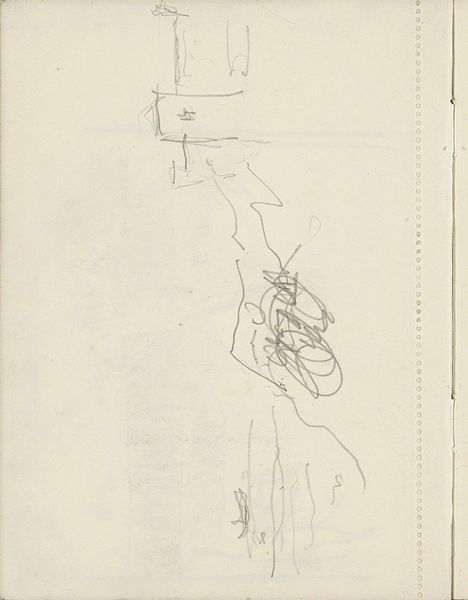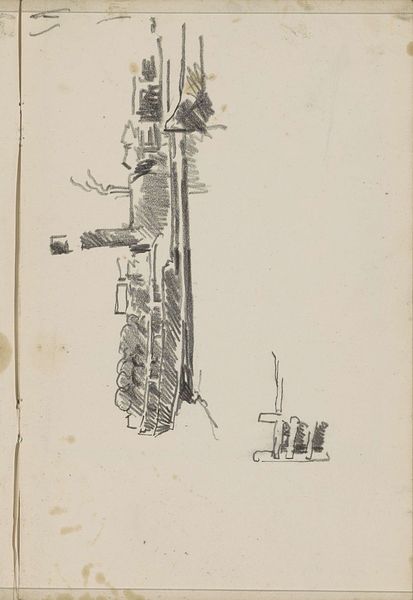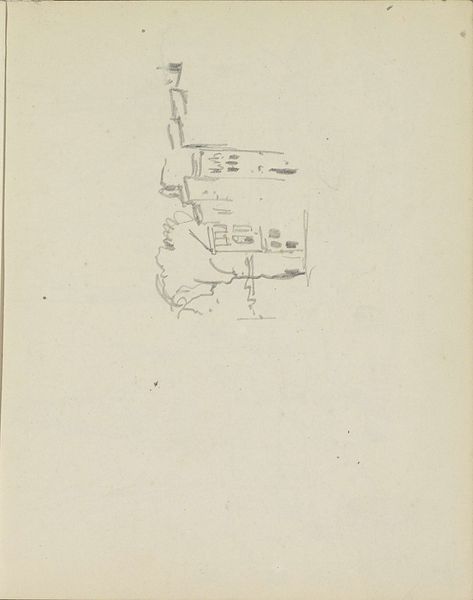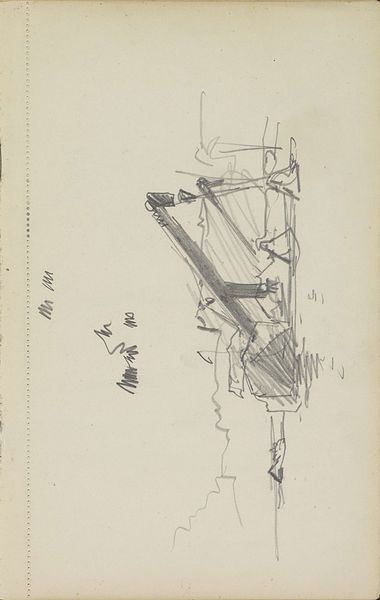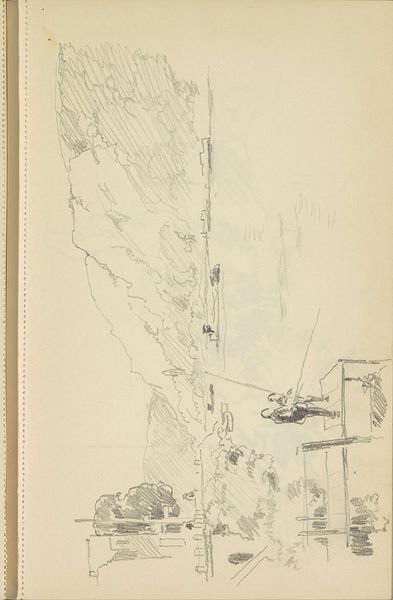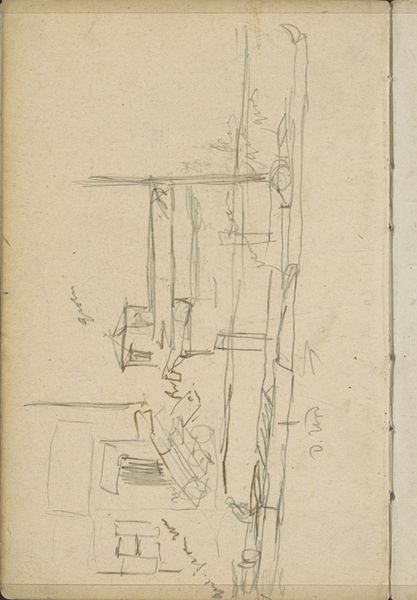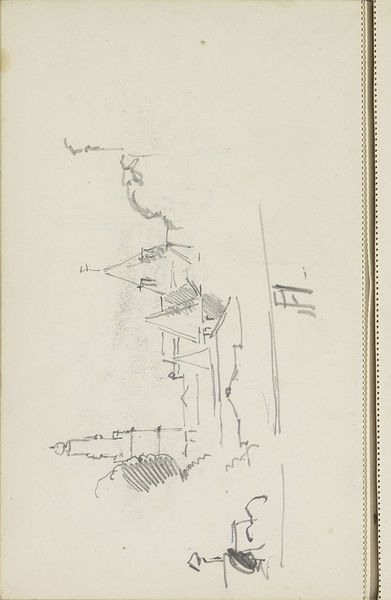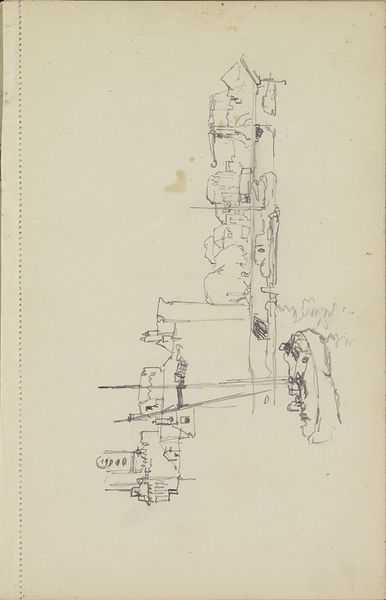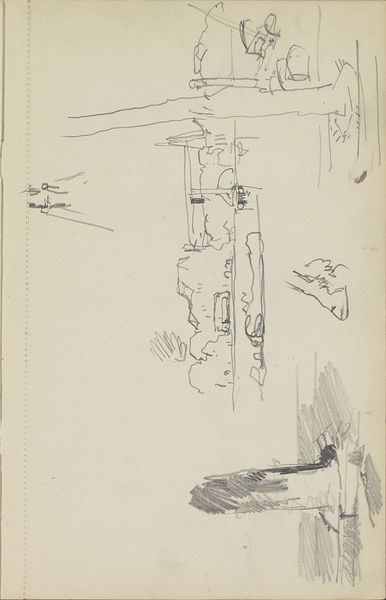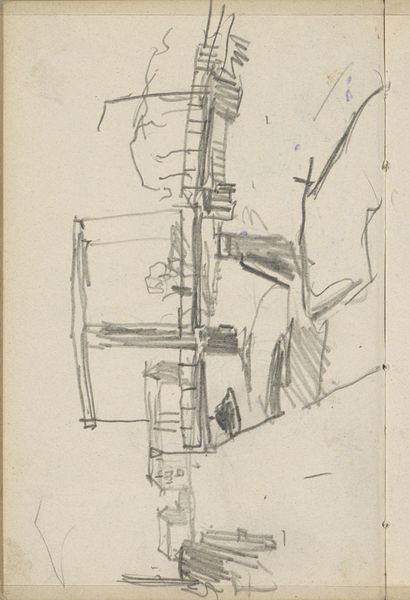
drawing, pencil
#
drawing
#
light pencil work
#
quirky sketch
#
incomplete sketchy
#
personal sketchbook
#
idea generation sketch
#
sketchwork
#
sketch
#
pen-ink sketch
#
pencil
#
sketchbook drawing
#
cityscape
#
sketchbook art
#
initial sketch
Copyright: Rijks Museum: Open Domain
Curator: Here we have Cornelis Vreedenburgh’s “Stadsgezicht met een kerktoren,” a pencil drawing dating from 1890 to 1946. Editor: Immediately, I notice the rawness of the sketch. It's all exposed, the workings, the iterative process…like a momentary capture of a city emerging, or perhaps vanishing. Curator: Precisely. Given the period, think about urban development, class struggles reflected in city planning…Was this the artist’s resistance to such social upheavals by immortalizing these decaying neighborhoods? How does this preliminary, sketchy portrayal allow us to consider narratives that speak about access and visibility within public spaces? Editor: And, of course, let's consider the humbleness of pencil on paper. A readily available material for the everyday person, right? In contrast to, say, oil on canvas. The medium choice in itself democratizes the artistic act and renders it more accessible, mirroring potential conversations of equity, accessibility, class structures of who owns and controls what kind of narrative we see within urban life. Curator: Yes, it allows those of us situated in today’s framework, thinking through the lens of gendered marginalization and community-building efforts, to reconsider and reimagine such spaces to ensure a space of agency for these displaced groups within our ever-gentrifying society. How can we reinterpret it not as nostalgia, but as active, hopeful imagining? Editor: That connects to the materials further—pencils have a very clear means of production rooted in resource extraction, working bodies transforming trees, graphite. Each mark is really evidence of this. The choice to work with such "basic" media suggests a stripping-back or interrogation of these systems and a desire to re-see the built environment from such a view. It pushes a dialogue about resource economy within a local community setting. Curator: I agree; seeing Vreedenburgh's artistic hand as an exercise, almost as social work or political commentary, enables this discourse surrounding city, citizenry and their roles, to further unpack complex social fabrics. It's less about what is, more about what could be. Editor: Well, looking closer at it again after our discussion, this piece makes me reconsider my own relationship with material choices and consider narratives in everyday structures. Curator: And I, I hope to see the beauty of urban spaces as constant spaces for reconstruction, whether physically and socio-culturally.
Comments
No comments
Be the first to comment and join the conversation on the ultimate creative platform.

